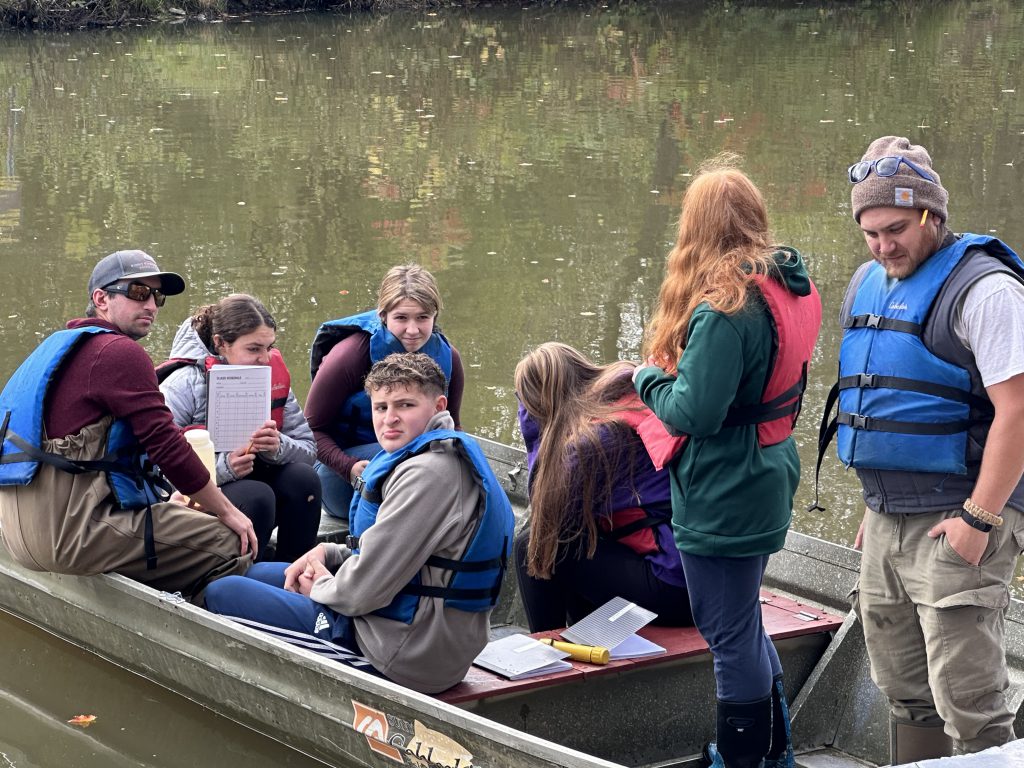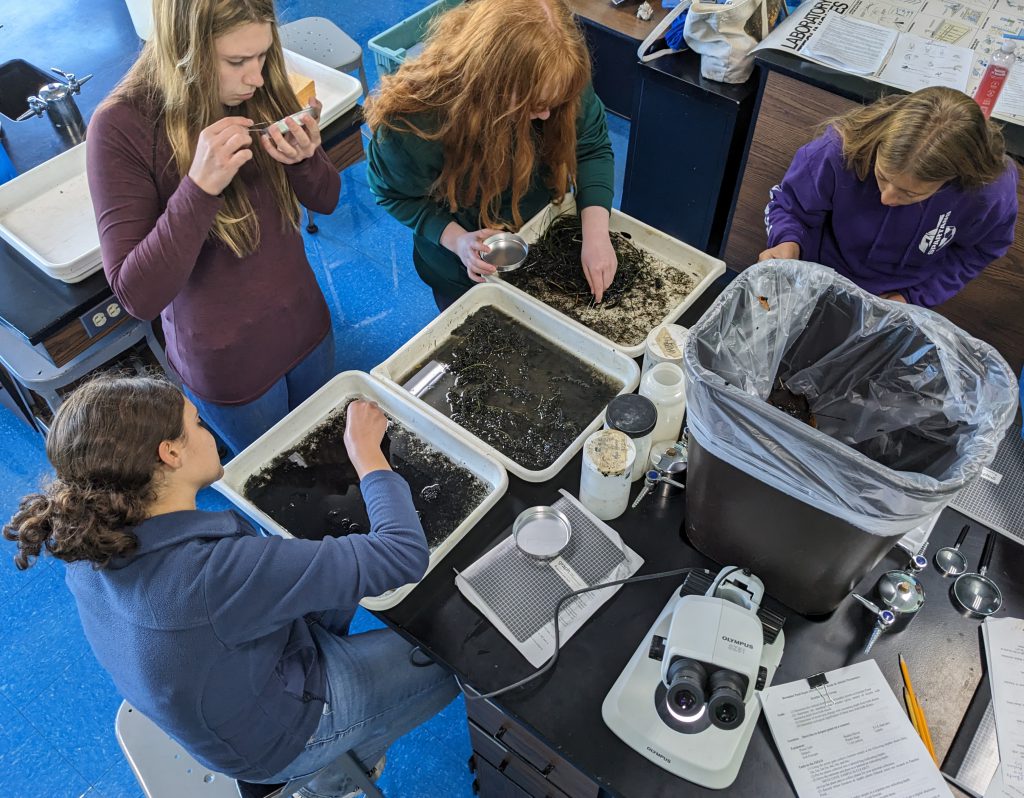
When SSCS high school students were looking to conduct college-level, hands-on science experiments they found a place in their own back yard.
Their science lab on this October day was Bowmaker Pond, a local nature retreat just up the road from the school well known for its fishing, hiking and picnicking. Bowmaker Pond is owned by the Town of Sharon and managed and stocked by the SUNY Cobleskill Department of Fisheries and Wildlife.
Last week, five students in SSCS’ new Science Research and Design course joined a half dozen SUNY Cobleskill undergraduate students and SUNY professor Mark Cornwell for a day of environmental research at the pond. There and back in their SSCS classroom, the students collected, tested and analyzed samples – searching for indicators of the pond’s water quality and fishery health.
Teaching the new four-year science program at SSCS is Alex Yorke. In the course, Yorke explained, students have an opportunity to participate in class-run projects, such as the Bowmaker Pond research, and pursue their own interests in a science field of their choosing. During their first two years, through literature and experimentation, students get to decide what interests them the most. Then as juniors or seniors they select a specific science project/lab to work on.
“I love the flexibility I have to mold the program to each individual student’s science passion and help them find what they are excited about in science,” Yorke said. “Then it’s about giving them the tools they need to take their passion into the lab or field and offering them real experience ‘doing science’ at a level they wouldn’t normally see until college.”
Taking the new high school course with Mr. Yorke are SSCS students Hunter Bolster (absent from the Bowmaker Pond lesson), Isabella Cornwell, Sophia Insogna, Jasmin Issa, Rami Issa and Kylie Rechnitzer.
Bowmaker Pond experiments
On the Bowmaker Pond site, SSCS students and teacher Yorke climbed aboard a small fishing boat and worked with the SUNY college crew during the morning to collect water samples from a multitude of water depths. They later came back to shore with their water samples and performed a battery of chemical analyses including determining the pond’s pH, dissolved oxygen content, alkalinity, hardness, ammonia content and turbidity.
During the afternoon, it was back on the boat armed with plastic buckets and fishing nets to collect plankton, organism and plant samples they studied in their lab at school. Professor Cornwell joined them in this experimentation. Using microscopes and other methods they were able to identify more than a dozen species of flora and fauna ranging from microscopic critters (midge larvae and water fleas), to macroscopic invertebrates (dragonfly larvae, fairy shrimp, sails and freshwater clams), to large-scale plants (cattails, coontail and floating pond weed).
After identifying and categorizing each organism, student calculated the relative biomass different types of organisms found at various depths of the pond. All chemical test results were corroborated by their biotic analyses. Further steps to this lesson on another day will include more detailed analyses of the pond’s planktonic life as well as graphing all data and creating visual models of the Bowmaker fishery.


